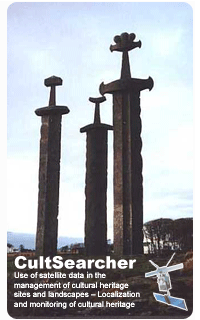Thousands of archaeological pits mapped in Øystre Slidre
Thousands of archaeological pits mapped in Øystre Slidre
The Norwegian Computing Center has developed automatic detection of pits in airborne laser scanning data. This method is now being used in the mapping of ancient iron extraction sites and hunting systems in Oppland County, Norway.
"Field work can now be acomplished 10 times faster with this new technology compared with traditional methods" says Lars Holger Pilø, archaeologist at Oppland County Administration. His team is currently mapping archaeological pits in a 400 km2 area in Øystre Slidre municipality. This area has at least 4000 ancient charcoal burning pits, which often occur in groups of two, three or four around the site of an iron extraction oven. 340 iron extraction sites have been confirmed by field survey so far, and by visual inspection of the automatic detections in the remaining area, the total number is about 700. Also, an ancient hunting system for deer hunting, containing ten individual pitfall traps, has been mapped.

Result of 4 hours of field survey at Yddin, Øystre Slidre municipality. Guided by the automatic detections and an archaeological understanding of the landscape, automatic detections could be verified quickly in a yes/no fashion.
Description of method
Trier, Øivind Due and Pilø, Lars Holger, 2012. Automatic Detection of Pit Structures in Airborne Laser Scanning Data. Archaeological Prospection 19 (2), pp. 103-121.

